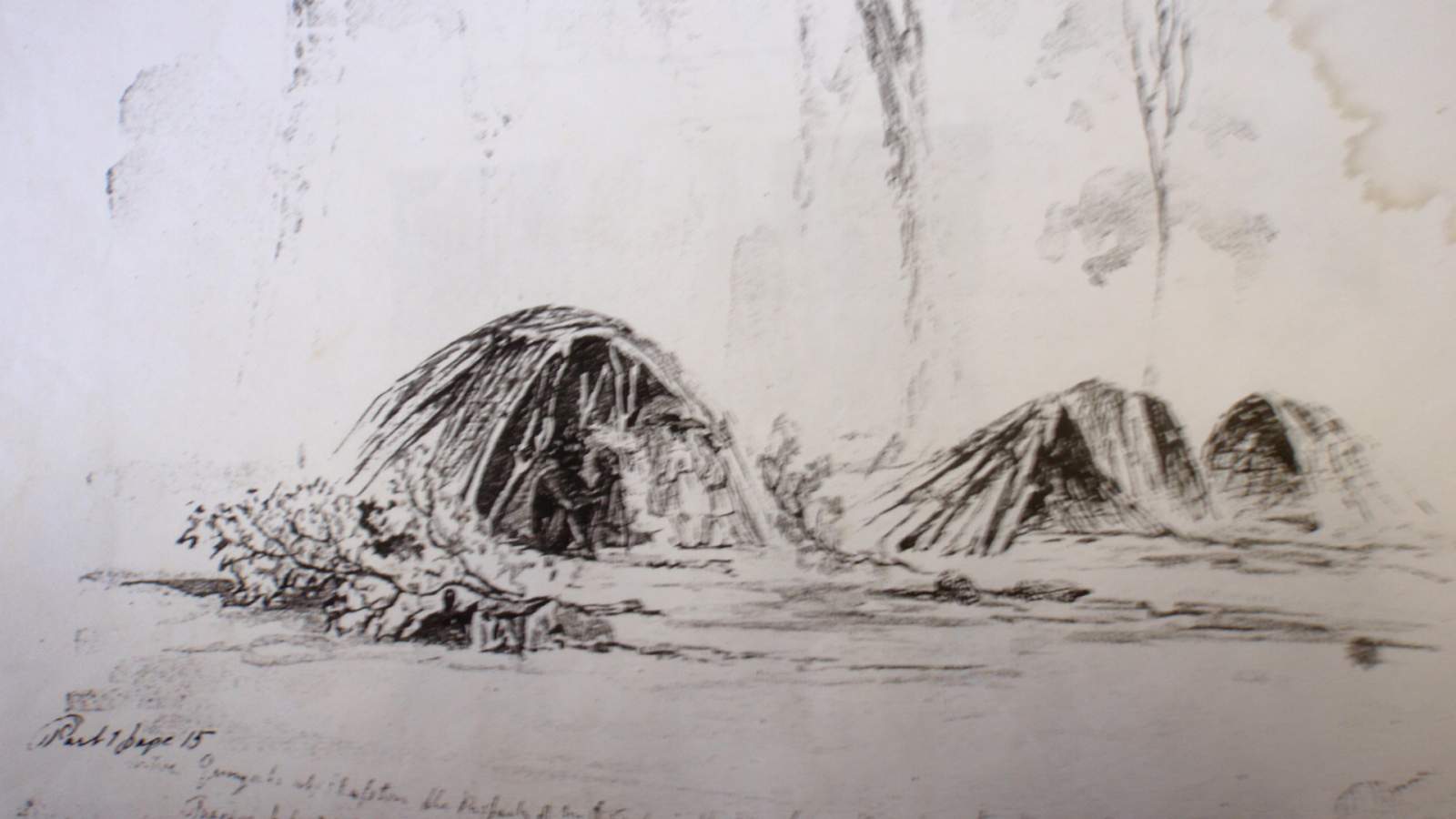There is confusion over Thomas Baines’ painting, ‘South Brisbane’. This short article explains the problem in interpreting the landscape depiction from the painting by reference to a discussion between Tim Roberts and Dr Ray Kerkhove.

Baines, Thomas, 1820-1875. South Brisbane From The North Shore, Moreton Bay, Australia, 1868. National Library of Australia.
Dr Kerkhove has argued that the painting is a conflated representation where problematically two artists shared their sketches with one other, Thomas Baines (1820-1875) and a commercial artist of a lithograph. He believes that it is not a literal rendering of the landscape, but nevertheless reveals roughly accurate contours which indicate locations of Aboriginal encampments. In terms of the ‘Aboriginal foreground’, Kerkhove argues that the artist’s interpretation likely ‘ripped off’ the work of Conrad Martens (1801-1878), who had a very similar sketch – but of the Aboriginal camp at Kangaroo Point (see below).

‘Kangaroo Point Camp’, Conrad Martens (1801-1878)
The artists are less about accurately conveying the landscape (the perspective of the hills is way off, for example). The question is whether the ‘campsite’ was just a ‘pleasant foreground’? Dr Kerkhove thinks not. He researched this painting as part of his work for FAIRA concerning Musgrave Park, and established that this was indeed ‘a view’ over South Brisbane looking across the river to North Brisbane – namely from the knoll of what became St Andrew’s Anglican Church (South Brisbane). The Aboriginal camp ran into what is now the Brisbane State High School at the southern end Musgrave Park. The view as taken today appears to match what we know constituted the little town of South Brisbane in the 1850s.
The challenge is that the view from North Brisbane also roughly matches, from the rise of Wickham Park and Roma Street. This too was an Aboriginal camp in the 1850s (famously featuring in the uproar over the hanging of Dundalli). Was the ‘Aboriginal foreground’ generic and move-able for the purpose of the artist’s landscape rendering? Dr Kerkhove also thinks that is a likely possibility.
Brisbane’s art historian, Tim Roberts, stated:
Like many artists, it can be seen in Baines’ work that his finished oils carry an aesthetic value that is slightly altered from what was actually going on. His watercolour sketches are a little more faithful, but I don’t believe one has been found of the Brisbane view. Certainly the NLA’s title of the work [‘South Brisbane from the North Shore, Moreton Bay, Australia’] is at least a century old in itself, as for many years it was the earliest oil painting of the north in their collection.
Quite simply, what can be concluded is that we are seeing a representation which is not a camera view of Brisbane in the 1850s, but nevertheless provides a fairly accurate image of several Aboriginal encampments, a reference to two sites, north and south of the river.
Timothy Roberts, BA(Hons) MPHA, is a consultant for Australian art heritage and decorative arts to 1945, President of the Professional Historians Association (Qld), and Vice-President, Royal Historical Society of Queensland.
Dr Ray Kerkhove, MPHA, is an independent consultant who specializes in reconstructing Indigenous site histories across southern Queensland. He was a visiting Fellow at Griffith University (2017-2018), and designed the first website on SE Queensland Aboriginal resistance. Ray has been working with the Aboriginal Environments Research Centre (Department of Architecture, University of Queensland) on aspects of frontier fortification and Aboriginal involvement in early architecture.
Neville Buch
Latest posts by Neville Buch (see all)
- J. D. Vance’s Insult to America is to Propagandize American Modernism - July 26, 2024
- Why both the two majority Australian political parties get it wrong, and why Australia is following the United States into ‘Higher Education’ idiocy - July 23, 2024
- Populist Nationalism Will Not Deliver; We have been Here Before, many times… - July 20, 2024
